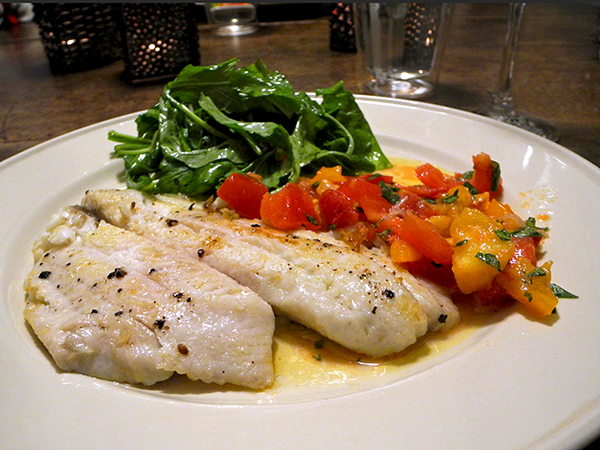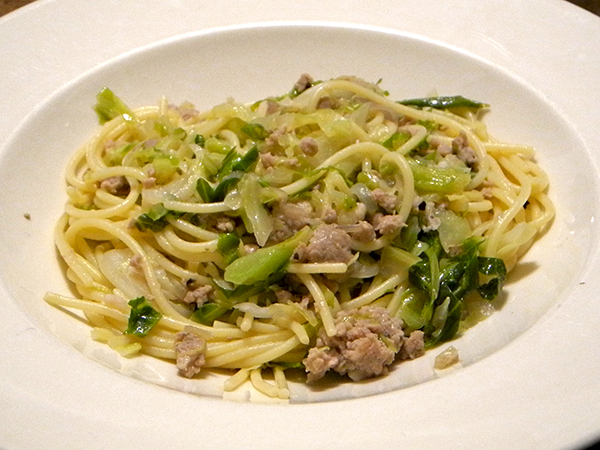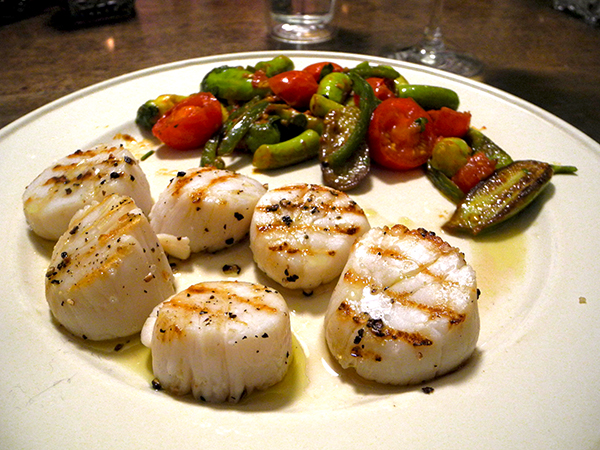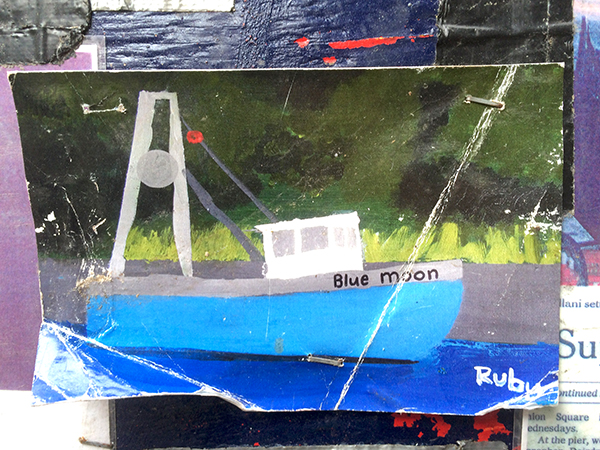Because flounder, or any of several related species found within New York waters, is such a great dining fish, because it’s so freely available, extraordinarily fresh, from our local fishermen, but also because, for many months of the year, we’re also fortunate to live with a huge bounty of tomatoes, I end up rearranging this basic recipe over and over again. And it seems to get better each time. But, just as important as any of those considerations, there’s the fact that it’s a very simple and very quickly-prepared entrée.
- two 6 or 7-ounce Long Island waters flounder fillets from P.E.&D.D. Seafood, lightly seasoned, cooked in a pan over high heat for a few minutes, turning once, then placed on plates, a couple of spoons of ‘tomato butter’ [see below] placed on top
- tomato butter, made by cooking, until slightly soft and fragrant, a tiny amount of shallot from Norwich Meadows Farm in a generous amount of butter, then letting the flavored butter cool slightly before being poured over three different small, fresh, very ripe heirloom tomatoes from Norwich Meadows Farm, chopped, then combined with a tablespoon of tarragon, chopped, from Stokes Farm, and seasoned with salt, pepper, and a few drops of red wine vinegar
- arugula, from Ryder Farm, dressed simply in some good olive oil, lemon, Maldon salt, and freshly-ground black pepper
- the wine was a California (Sonoma) white, Scott McLeod, Chardonnay Russian River Valley 2014
- the music was the album, ‘Time Curve – Music for Piano By Philip Glass and William Duckworth‘, performed by Bruce Brubaker





